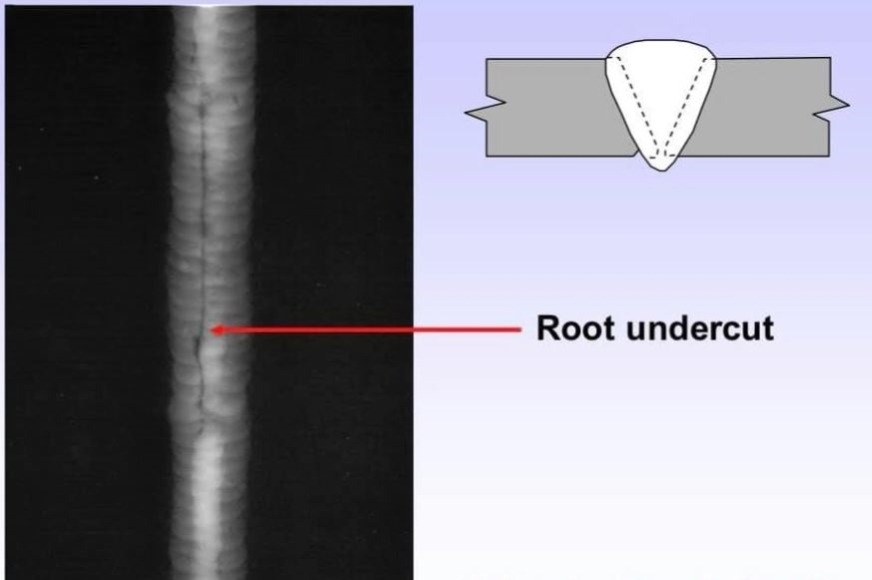Expert Techniques for Preventing Weld Undercut Effectively
Expert Techniques for Preventing Weld Undercut Effectively
Blog Article
Mastering the Art of Welding: How to Stay Clear Of Undercut Welding Issues for Flawless Construction Results
Efficiency and accuracy are paramount worldwide of welding, where even the least blemish can jeopardize the architectural integrity of a produced piece. One usual challenge that welders face is damaging, a defect that can lead and deteriorate a weld joint to expensive rework. By recognizing the origin triggers of undercut welding and applying reliable methods to stop it, welders can elevate their craft to brand-new degrees of excellence (Preventing weld undercut). In the pursuit of remarkable fabrication outcomes, mastering the art of welding to prevent undercut concerns is not just an ability yet a requirement for those making every effort for perfection in their work.
Comprehending Undercut Welding

To avoid undercut welding, welders must make sure appropriate welding specifications, such as adjusting the existing, voltage, travel speed, and preserving the correct electrode angle. In addition, utilizing the appropriate welding strategy for the details joint setup is necessary. Using weaving movements or backstepping techniques can assist ensure proper weld steel deposition and lower the probability of undercut formation. Routine inspection of welds throughout and after the welding procedure is also essential to capture any type of undercut early and make necessary adjustments to stop more problems. Preventing weld undercut. By understanding the sources of undercut welding and applying safety nets, welders can achieve high-grade, structurally audio welds.
Reasons of Undercut in Welding
Recognizing the elements that add to damage in welding is crucial for welders to produce premium, structurally audio welds. Insufficient welding inaccurate or present welding rate can likewise add to undercut. Understanding these causes and executing appropriate welding techniques can aid avoid damaging concerns, making certain strong and long lasting welds.
Strategies to Avoid Undercutting

To reduce the danger of damaging in welding, welders can employ calculated welding methods intended at boosting the high quality and honesty of the weld joints. One reliable method is to readjust the welding parameters, such as voltage, existing, and travel speed, to ensure proper warmth input and deposition. Keeping a suitable electrode angle and making sure regular traveling speed can likewise aid protect against undercut. Additionally, utilizing the appropriate welding strategy for the specific joint configuration, such as weave or stringer grains, can add to decreasing damaging. Preventing weld undercut.
Employing back-step welding methods click for more info and controlling the weld grain account can likewise assist distribute heat anchor evenly and minimize the danger of undercut. Normal assessment of the weld joint during and after welding, as well as applying top quality assurance steps, can aid in identifying and addressing damaging problems immediately.
Importance of Appropriate Welding Parameters
Picking and maintaining suitable welding criteria is crucial for accomplishing successful welds with very little issues. Welding parameters describe variables such as voltage, existing, take a trip speed, electrode angle, and securing gas circulation rate that directly affect the welding process. These parameters have to be carefully readjusted based upon the sort of product being bonded, its thickness, and the welding strategy utilized.
Correct welding parameters make sure the appropriate quantity of warmth is put on thaw the base metals and filler material uniformly. If the criteria are set as well high, it can cause extreme warm input, creating distortion, spatter, or burn-through. On the various other hand, if the criteria are as well reduced, incomplete blend, lack of penetration, or undercutting may happen.
Quality Control in Welding Procedures

Verdict
In final thought, understanding the art of welding calls for a detailed understanding of undercut welding, its reasons, and techniques to stop it. By making certain proper welding criteria and implementing quality control techniques, perfect fabrication results can be achieved. It is necessary for welders to consistently make every effort for quality in their welding operations to prevent undercut issues and generate top quality welds.
Undercut welding, a common flaw in welding processes, happens when the weld steel doesn't properly fill up the groove and leaves a groove or clinical depression along the welded joint.To avoid undercut welding, welders ought to ensure appropriate welding criteria, such as readjusting the current, voltage, travel rate, and keeping the appropriate electrode angle. Poor welding current or incorrect welding speed can also add to undercut.To alleviate the danger of undercutting in welding, welders can use strategic welding strategies aimed at boosting the top quality and honesty of the weld joints.In verdict, understanding the art of welding needs a thorough understanding of undercut welding, its reasons, and strategies to prevent it.
Report this page